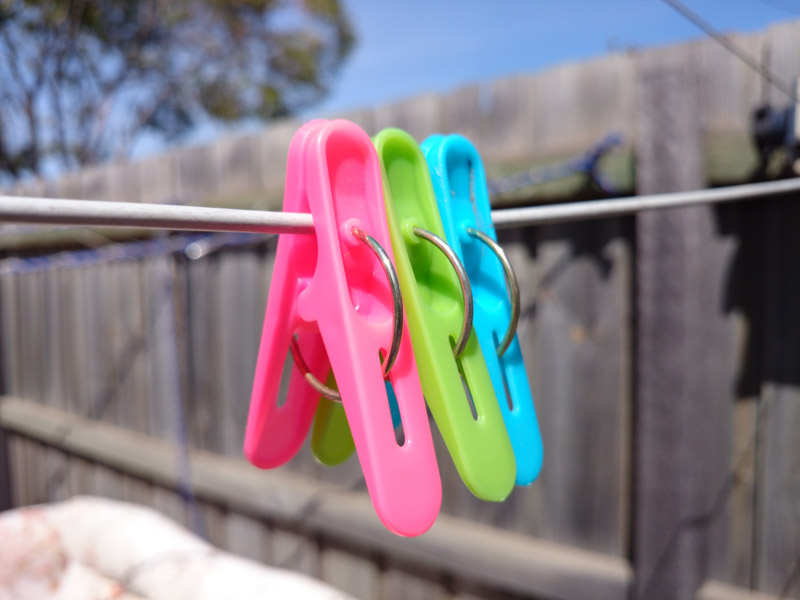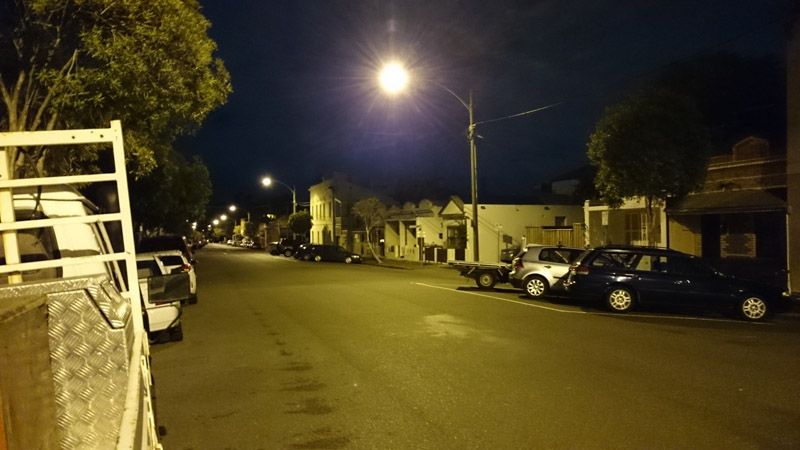Sony Xperia Z1 Compact Review > Camera: A Glorious 20 Megapixels
Photographic camera: A Glorious 20 Megapixels
Sony didn't skimp on the processor inside the Xperia Z1 Compact, and they didn't skimp on the camera either. The aforementioned xx.7-megapixel 1/two.three" Sony Exmor RS CMOS sensor from the Xperia Z1 is seen in the Z1 Meaty, paired with a 27mm-equivalent f/2.0 "G Lens" and an LED flash. On the front we're seeing a 2-megapixel sensor, and both cameras are capable of 1080p video. One notable omission from the camera module is optical paradigm stabilization (OIS), which would profoundly assistance the small 1.1µm pixels in low-light conditions.
This very photographic camera module in the Xperia Z1 established itself equally beingness the all-time bachelor in an Android smartphone, and nothing much has changed since. With the Bionz image processor at hand, the Z1 Meaty is capable of some fantastic shots, both in clarity and in color accuracy.



I was never disappointed with a photo taken in good lighting conditions, with the Z1 Compact capturing authentic, detailed images that I've come to dearest from Sony's imaging solutions. Automated white balance almost ever measures conditions perfectly, and colors reproduced are both vibrant and balanced. Sony's G Lens is sharp and its f/2.0 aperture tin give some great results when shooting macro, even if the bokeh is well off what you'd get with a dedicated photographic camera.


The sharpness of each epitome is assisted by the sensor size and megapixel count. With 20.7 megapixels of real estate producing 5248 x 3936 images with a 4:3 aspect ratio, in that location'due south room to crop or downscale as yous come across fit. Looking at a 100% ingather reveals the sensor actually captures quite a lot of particular, with edges appearing precipitous and without significant post processing artefacts. Downscaling these images looks fifty-fifty better, producing some of the best smartphone photos I've seen.




The Z1 Compact likewise does a decent job of capturing photos indoors and in weather where lighting isn't equally good. The camera'due south software does a fantastic job of choosing optimal settings in dodgy weather, and the terminate effect are surprisingly precipitous images (especially if the software image stabilizer is enabled) with, again, accurate color reproduction and white balance.
Low lite photos aren't the Z1 Compact'due south potent adapt, just the smartphone nevertheless performs extremely well because the hardware it'south using. Shots taken at night fourth dimension aren't quite as skilful as those from Nokia Lumia devices or the HTC One, simply they are surprisingly proficient for a camera without OIS, and well ahead of handsets like the Samsung Galaxy S4.



While photos from the Xperia Z1 Compact are generally superb, the camera app problems of the Xperia Z1 are even so nowadays. Superior Car does a ameliorate job of judging automatic camera settings than the Transmission mode will by default, but it's limited to shooting at 8-megapixels in a sixteen:9 aspect ratio. I wouldn't say the differences in image accuracy are huge, just it would be dainty to accept the selection to capture 20-megapixel shots in Superior Auto mode.
More than of a concern is what you can't do in general while shooting in xx-megapixel way. The maximum ISO is capped at 800 (while you can go up to 6400 in eight-megapixel mode), which by itself is relatively dissonance-gratis for a smartphone sensor, simply completely inadequate in low-light conditions. Adept luck getting a xx-megapixel prototype that isn't pitch black at night, even though Superior Auto tin produce the goods.
There'south also no twenty-megapixel outburst way, and no HDR mode. HDR images from Exmor RS sensors are generally fantastic, and those taken at 8-megapixels on the Z1 Compact are no exception, nonetheless I wish these photos were possible at full resolution.



The Z1 Compact is one of the few Android devices with a dedicated two-phase camera button, which has its advantages and disadvantages. The push button is actually quite hard to push in all the way, meaning blur can sometimes exist introduced into your images if you opt to capture through the hardware push button rather than the on-screen push button. It's more comfortable to concord the smartphone and shoot using the hardware button, just I quickly begun opting for the software push to reduce my chances of blurring my shots.
On the other hand, the hardware button actually allows you to use the smartphone every bit an underwater photographic camera, as information technology's impossible to employ the touchscreen when it's in contact with liquids. Do note though that the Z1 Compact is non rated for usage in salt h2o and might stop working if salt finds its style inside, so proceed your underwater photography to pools rather than the oceans.
The Xperia Z1 Compact captures 1080p H.264 video at 30 frames per second with an overall bitrate of 17.5 Mbps, which is decent enough for mobile video capture. Quality is simply as good as you'd await from the sensor, with frames looking abrupt and colors being well counterbalanced. The lack of OIS can affect stabilization when walking and panning, although the software stabilizer seems to do an okay task. Automatic exposure and focus works quickly and accurately, while stero sound quality is acceptable.
Source: https://www.techspot.com/review/791-sony-xperia-z1-compact/page4.html
Posted by: ethertoncalawn.blogspot.com


0 Response to "Sony Xperia Z1 Compact Review > Camera: A Glorious 20 Megapixels"
Post a Comment